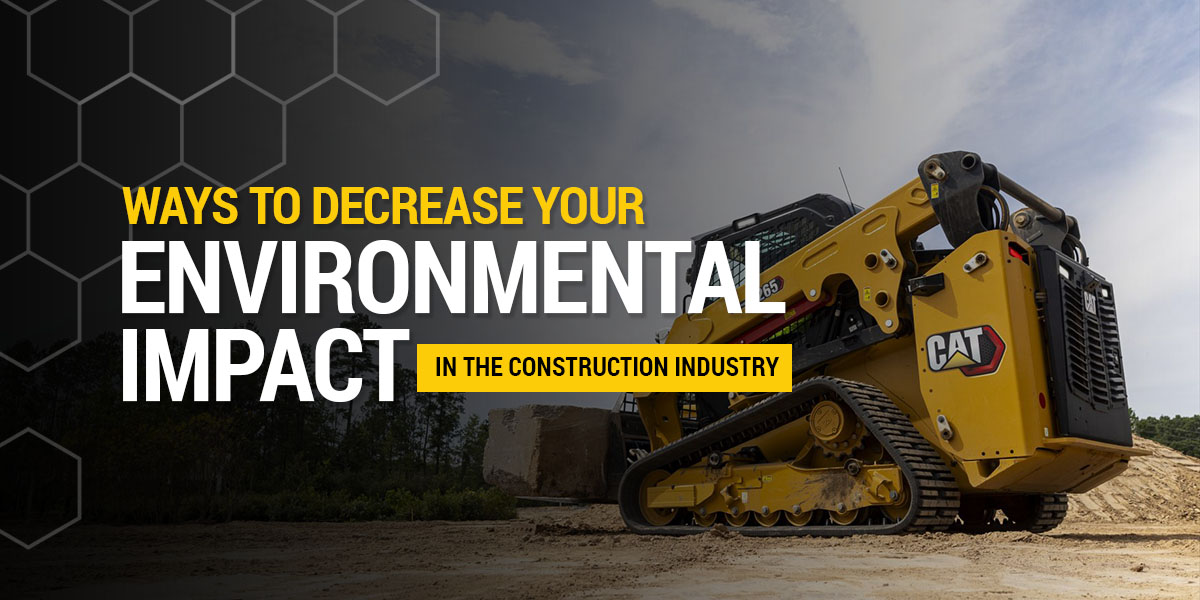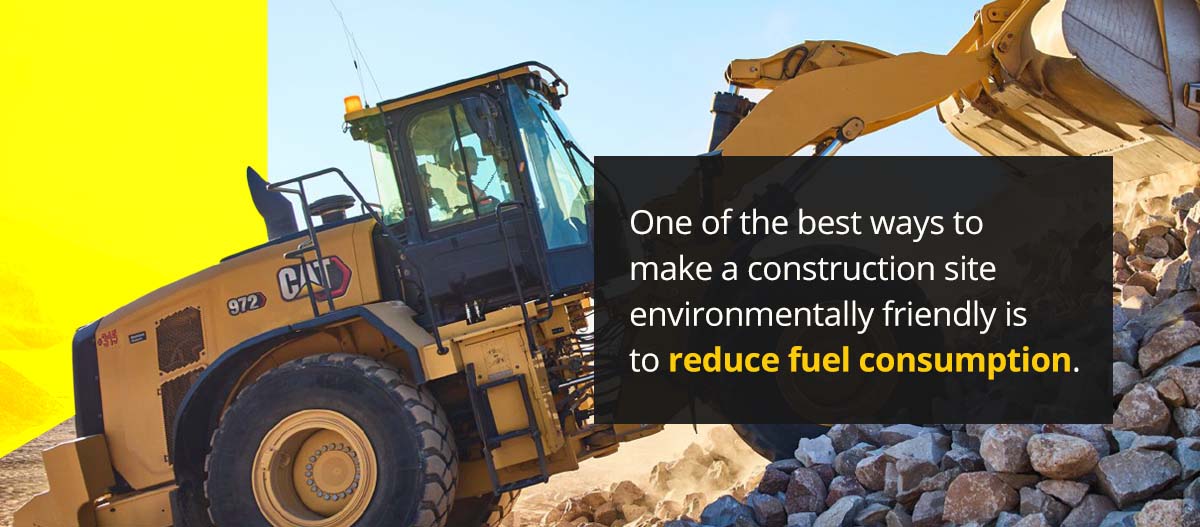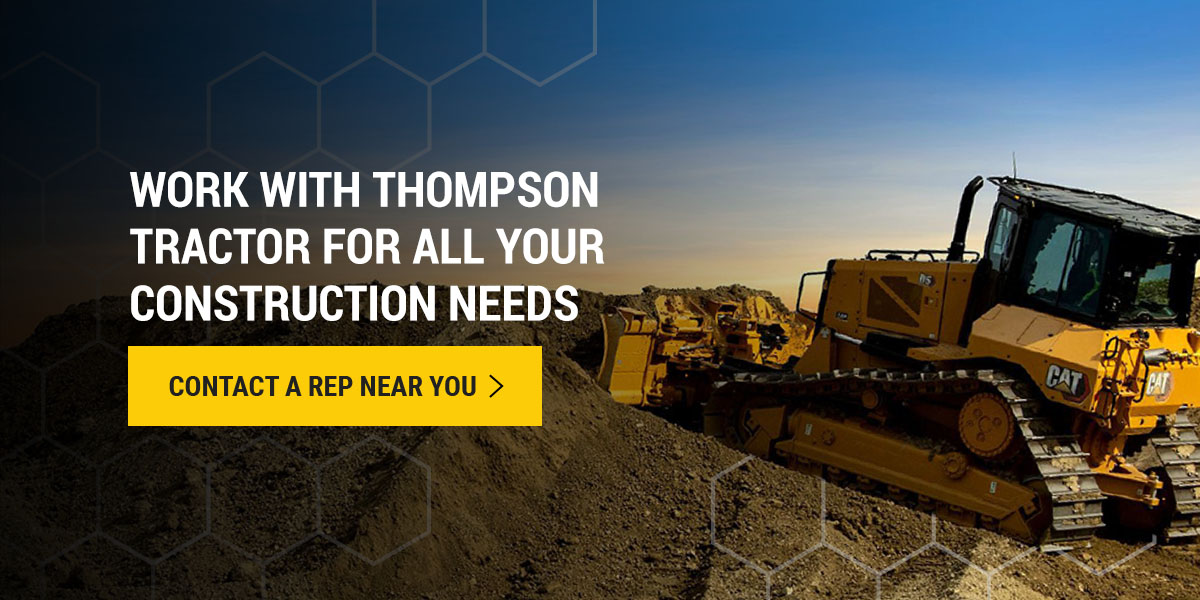Construction is a booming global industry. Between now and 2060, the world is likely to construct almost 2.5 trillion square feet of new developments — the equivalent of adding another Paris to the planet every week.
The construction industry uses massive amounts of resources and generates tons of greenhouse gases and waste, so construction and the environment often have competing needs. In 2019, the construction and buildings sector accounted for 30% of ultimate energy use and almost 26% of energy and carbon dioxide (CO2) emissions. Using green building practices can complement your sustainable construction efforts.
If you’re wondering how to decrease the environmental impact of construction, you’re not alone. How can you make your construction site environmentally friendly? In this guide, we lay out some of the environmental impacts of construction, explain how to have a green construction company, and discuss sustainable construction materials and techniques.
What Are the Environmental Impacts of the Construction Industry?
Why is construction bad for the environment? The construction industry has historically had several environmental impacts.
1. Fuel Consumption
What is the most significant environmental impact of buildings during the construction phase? One of the primary candidates is the pollution associated with fossil fuel consumption. Construction projects notoriously guzzle fossil fuels like gas and diesel. This fuel consumption also notoriously emits large volumes of greenhouse gases like carbon dioxide, methane, and other waste products.
Across all industries, construction accounts for the third-highest level of greenhouse gas emissions, generating about 37% of carbon dioxide-equivalent emissions. These gases contribute to the greenhouse effect. They help hasten the grim consequences of climate change — rising global temperatures, rising sea levels, ocean acidification, and increased prevalence of extreme weather events.
2. Noise Pollution
Construction also has adverse environmental effects via noise pollution. There’s no way around it — construction equipment is loud, and these noises can wreak havoc on the surrounding environment, especially in a residential area. The different types of machinery used in excavation, demolition, building, and landscaping all contribute to noise pollution.
3. Waste Generation
Construction projects also tend to generate huge amounts of waste. In 2017, U.S. construction and demolition projects produced 569 tons of debris. Much of it piles up in landfills around the country or goes to incinerators that belch smoke and pollutants into the air as they work. Both of these methods of disposal have a detrimental impact on the environment.
4. Pollution and Emissions From Materials Manufacturing
The construction industry uses over 2 billion metric tons of materials every year. And manufacturing those materials consumes fossil fuels and produces tons of carbon emissions. Concrete is a particular culprit in this regard — cement, the main ingredient in concrete, accounts for an astounding 8% of the world’s carbon dioxide emissions.
5. Contaminated Discharge
Polluted effluent from construction sites can harm the surrounding ecosystem. Contaminated discharge can come from chemicals, wheel wash stations, and any areas where pollutants come into contact with the environment. Even without direct discharge, precipitation and stormwater can sweep away these contaminants as runoff and deposit them in surface water, carry them to groundwater, or leave them to pollute the soil.
6. Damage From Outdated Techniques
Some construction techniques can cause physical damage to the environment. The sandbags and dewatering solutions used in bridge and dam construction, for instance, can cause soil erosion, runoff, sedimentation, and permanent alterations of delicate aquatic ecosystems.
7. Construction of Wasteful Buildings
The environmental impacts of a construction project last long after the construction project is over. Part of the reason is that the structures built during the project may not themselves be environmentally friendly — operating buildings in the residential and commercial sectors account for about 40% of the United States’ total energy use.
How to Protect Our Environment During Construction
What are some ways to help the environment in construction? Here’s how to make construction more sustainable.
1. Reducing Fuel Consumption
One of the best ways to make a construction site environmentally friendly is to reduce fuel consumption. Construction businesses can reduce their fuel consumption in a few different ways:
- Using alternative fuel sources: Using alternative fuels like biodiesels helps reduce fuel consumption and greenhouse gas emissions.
- Using hybrid equipment: Using hybrid equipment that runs on fossil fuels and electricity helps reduce fuel consumption and greenhouse gas emissions.
- Upgrading equipment: If using hybrid equipment is infeasible, companies can consider upgrading their equipment to more fuel-efficient models. If new machinery costs are prohibitive, construction companies could look to reliable sources like Cat® dealers for reliable, fuel-efficient used equipment.
- Reducing haul distances: Reducing haul distances minimizes fuel consumption by decreasing the amount of fuel required for a trip.
- Minimizing vehicle idling time: When vehicles idle, they continue to burn fossil fuels, even though they’re not going anywhere. On some projects, idling time accounts for up for most of the vehicle’s running time, and medium-heavy trucks can burn half a gallon to nearly a full gallon of fuel per hour of idling.
2. Reducing Noise Pollution
Adhering to local ordinances about noise pollution can help create goodwill with the surrounding community. Neighbors who need to rest before the workday will appreciate not having their sleep disrupted by a construction project starting work at 6:00 a.m. It’s also smart to post notices and send letters to residents outlining the details of the construction project, such as when construction will take place and how long you expect the project to last.
3. Reducing Waste Generation
Construction businesses can minimize the consumption of new materials by buying used, salvaged, or recycled materials. They can also reduce the waste they generate by sending their construction and demolition debris to be recycled and used again in new projects.
Appliances, fixtures, hardware, bricks, wood, metals, plastic, and concrete are ideal for salvaging or recycling. Metals and wood have high recycling values, and materials like bricks and concrete can find new life as fill or driveway bedding.
4. Implementing Erosion Control Measures
Sandbags can damage the environment near a construction site, but alternative solutions like inflatable dams and soil netting are gentler on local ecosystems. They also offer the benefit of a much lower cost. They are easy to install and take up relatively little space, and they help minimize pollution in the form of soil swept away during construction projects. These controls also help decrease the amount of soil exposed during construction activities, and reduced soil exposure also helps limit erosion.
5. Minimizing Discharge of Contaminants
Construction sites can help protect the environment by minimizing ways contaminants can leach into the surrounding soil and water. Avoid dumping chemicals near the construction site — send them to a facility that can treat and safely dispose of them. And be sure to store used chemicals and wheel washes in areas where storm runoff is less likely to carry them away.
The law prohibits some construction effluents outright. Prohibited construction discharges include the following:
- Wastewater from concrete washout
- Fuels
- Oils
- Soaps
- Solvents
- Detergents
- Toxic or hazardous substances
6. Accelerating Timelines
Speeding up construction timelines can help minimize the damage done to the local environment. The longer a construction project goes on, the more fuel it consumes, the more greenhouse gases it emits into the atmosphere, and the longer the nearby residents have to live with the noise. An accelerated timeline makes the project more efficient and reduces the period of heavy environmental impact. It can also reduce the length of traffic disruption and increase safety.
Construction companies can accelerate timelines by:
- Simplifying supply chains with local sourcing.
- Using just-in-time delivery so material arrives when needed to reduce on-site clutter and improve workflow.
- Collaborating with consultants familiar with industry certifications to expedite compliance and approval.
- Cross-training workers to reduce reliance on specialized subcontractors.
7. Teaming Up for Energy-Efficient Buildings
Partnering with land developers and architects to plan and construct greener buildings is another way construction businesses can help decrease their environmental impact. Constructing complexes that incorporate and preserve green space is one way to do this, as is developing buildings that make use of alternative energies with solar panels or small wind turbines.
Green buildings provide many benefits, one of which involves reduced operational costs. Leadership in Energy and Environmental Design (LEED) is the most common green building certification program globally, and LEED-certified buildings provide operational savings of up to 20% over traditionally constructed buildings. Green renovations and retrofits can produce savings of up to 10%. Green buildings also help improve the health of the employees who work there because of their reduced pollutants and increased indoor air quality.
8. Investing in Sustainable Materials and Techniques
The manufacture of many of the materials needed in construction projects comes at the cost of high fuel consumption and greenhouse gas emissions. However, construction companies can reduce the fuel consumption and emissions associated with manufacturing their needed materials by using alternative, recycled or salvaged materials in their projects. And they can adopt sustainable techniques to make their projects easier on the local environment.
Contractors can invest in Building Information Modeling (BIM) to optimize designs, reduce errors, and plan resource-efficient projects. These tools allow you to track emissions, energy use, and waste through digital monitoring systems to help keep your projects on target for sustainability goals.
9. Prioritizing Local Sourcing
Sourcing construction materials locally is a vital step toward making construction more sustainable. This practice lowers transportation emissions and supports local economies. Material transported across shorter distances requires less fuel, reducing construction projects’ carbon footprint. Local suppliers often adhere to regional regulations so their materials meet the latest eco-friendly standards. Construction projects that source locally inject money into regional markets, which supports small businesses and job creation.
10. Adopting Modular and Prefabricated Construction
Modular and prefabricated construction is revolutionizing how construction workers build by offering an efficient, cost-effective, and sustainable alternative to traditional methods. Modular construction involves assembling sections of a building in a controlled factory setting, while prefabricated construction entails creating structural components offsite. These components are transported to the construction site and joined to create a finished structure.
Fewer on-site activities mean less machinery use, which reduces emissions during construction. These methods also provide less noise, dust, and disruptions for the surrounding communities and ecosystems. Some benefits of adopting these methods include:
- Reduced waste: Factory environments minimize material waste by cutting components to exact specifications. Some prefabricated components are made with recyclable or reusable materials.
- Faster project completion: While modules are fabricated in the factory, site preparation and foundation work can work simultaneously to cut project timelines. Building indoors reduces delays caused by adverse weather conditions.
- Energy efficiency: Prefabricated walls and modules often come with pre-installed insulation. Factory-built components are designed for maximum efficiency.
11. Incorporating Passive Design Strategies
Passive design strategies focus on improving a building’s natural environment to reduce energy consumption and improve occupant comfort. One of the ways they support sustainability in construction is by creating stable indoor temperatures, natural light, and improved air quality by incorporating the following elements:
- Orientation and layout: Positioning buildings to capture sunlight in winter while keeping buildings cool in summer.
- Natural ventilation: Designing for cross-breezes to cool interiors.
- Thermal mass: Using materials that absorb and release heat to stabilize indoor temperatures.
- Shading devices: Incorporating overhangs, pergolas, or vegetation to block harsh sunlight.
- Daylighting: Maximizing natural light to reduce reliance on artificial light sources.
12. Implementing Life Cycle Assessments
Life Cycle Assessments (LCAs) evaluate the environmental impact of a building or construction project from start to finish. LCAs provide a clear picture of where improvements can be made to reduce carbon emissions, waste, and resource consumption. These methods evaluate:
- Raw material extraction.
- Material processing.
- Construction.
- Operation.
- End-of-life.
This provides a data-driven approach for choosing sustainable materials and methods. Once contractors and developers have identified inefficient materials or processes, they can find better ways to reduce waste and save energy.
What Are Sustainable Construction Materials?
Sustainable construction consists of materials with a low ecological impact in their manufacture and minimal environmental impact once construction is complete. Some examples of materials that promote sustainability in the construction industry include the following.
1. Renewable Wood
Cutting down trees for construction projects is not a perfect environmentally sound solution. While logging generates some pollution, it pales in comparison to the amount of pollution produced in the manufacture of plastic and other products. With proper logging methods and adequate forest management, wood is a renewable resource. With the right work and commitment, it is possible to provide enough wood for construction projects while maintaining forest ecosystems’ biodiversity.
2. Recycled Plastic
Plastic comes from petroleum, and its manufacture burns substantial amounts of fossil fuels and releases tons of greenhouse gases. Recycled plastic provides a much more eco-friendly alternative.
Recycled plastic can be melted down and remade into new plastic components, but it can also find use in surprising construction applications. Plastic can be pulverized and used as filler in concrete, for example, helping to reduce some heavy carbon emissions that would otherwise be necessary for concrete production.
3. Bamboo
Bamboo grows much faster than hardwood. So when construction companies want an even more sustainable option than wood, they can turn to bamboo for a resource that quickly and efficiently replenishes itself. It is also lightweight for easy transport and has high tensile strength for durability and safety.
Construction projects can use bamboo in flooring or as an eco-friendly alternative in rebar and concrete construction. If companies can source their bamboo locally, their projects become even greener and more sustainable.
4. Straw Bales
Because of their bulk and porous nature, straw bales make excellent alternative insulation materials if construction projects use the correct sealing techniques. Straw bales can also substitute for plaster, concrete, and other building materials traditionally used to make walls.
Straw is a natural agricultural by-product. It consists of the dry stalks left over after the grains and chaff are removed from cereal grain plants — so it is readily available, quick to replenish, and exceptionally renewable. It is also lightweight and affordable, especially compared to many traditional construction materials.
5. Sheep’s Wool
Sheep’s wool is also an excellent alternative insulation material. It boasts low thermal conductivity and keeps homes cool in the summer and warm in the winter. Its lightweight and affordable prices may make it an attractive, convenient solution for many construction projects. It is endlessly renewable, and if the local community has sheep or hobby farms, it may be locally sourced as well.
6. Timbercrete®
Timbercrete is a relatively new type of construction material made from the compaction of concrete and recycled timber waste like sawdust. The resulting material is lighter than concrete but still exceptionally durable.
Using Timbercrete in construction projects helps reduce waste by using a recyclable material. It also helps cut down on the heavy fuel consumption and greenhouse gas emissions associated with the production of pure concrete.
What Are Sustainable Construction Techniques?
Sustainable construction techniques are methods that help reduce waste, decrease greenhouse gas emissions, and create buildings that consume less energy. Beyond lowering fuel consumption and using recycled materials, some common sustainable techniques in the construction industry include the following.
1. Installing Integrated, Automated Building Systems
With the increasing popularity of the Internet of Things (IoT), home devices like smart thermostat controls, web-connected doorbells and other comfort and security devices are coming into more widespread use. However, IoT products can help with overall building maintenance as well. Discreet, connected sensors can keep track of lighting, airflow, temperature, and security. When they sense people have left a room, they can lower the heat and turn off the lights, decreasing energy waste and reducing utility bills.
Construction businesses can incorporate these features directly into their buildings to help them operate more sustainably long after construction is over.
2. Providing Alternative Energy
Construction businesses can also partner with designers and local energy companies to provide alternative power to the buildings they construct. They can install solar panels on the roof or in the yard or small wind turbines. They can also help arrange for the building’s energy to come from wind or solar farms if direct installation on the property is infeasible.
3. Switching to Synthetic Roofing Materials
Installing green roofs helps make a building’s energy use more sustainable. Most roofs have an underlayment of asphalt, which tends to break down relatively quickly. Then, the insulating properties of the roofs suffer — the breakdown creates leaks where hot and cold air can escape and allows moisture to seep into the building’s interior. The building’s energy usage and utility bills tend to rise as a result. Asphalt also contains volatile organic compounds (VOCs) that pollute the environment and can be detrimental to human health.
Green roofs use a synthetic underlayment that helps the roof last longer, keeps the building better insulated, and reduces energy needs. This synthetic underlay is typically free of VOCs, so it also helps reduce pollution.
4. Promoting Green Roofs
Another way construction businesses can turn the roof into an environmental advantage is to work with architects and designers to create a green roof filled with ferns, flowers, shrubs, and other greenery. The plants help absorb carbon dioxide and improve the air quality in and around the building. They also provide a little natural insulation that can help reduce heating and cooling costs. The soil helps absorb rainwater to minimize pools of standing water that can lead to leaks and decreased insulative properties.
5. Installing Greywater Plumbing
Greywater plumbing systems help reduce water waste. With greywater plumbing, every stream of wastewater in the building — except for sewage — undergoes processing and reuse. Construction businesses can promote and install greywater plumbing systems to help their buildings use water more sustainably.
6. 3D-Printing Structural Components
Not all construction components have to be cut down, refined, or manufactured. These processes are often wasteful, but in some cases, 3D printing provides a greener alternative. Printing structural components for buildings locally can also cut down on shipping costs and associated fuel consumption. In 2018, a Dutch startup finished the world’s first 3D-printed bridge, printing the steel components via robotic welding arms. It will be installed across an Amsterdam canal once canal reconstruction is complete. The use of 3D printing has since gained a small foothold in the construction industry and will likely expand.
7. Experimenting With Bioconcrete
Bioconcrete is concrete with two extra ingredients: bacillus bacteria and calcium lactate, which the bacteria use for food. Bioconcrete has one primary advantage — it can heal the cracks that form when water seeps into the concrete. The bacteria don’t harm people or the environment, but when water enters the concrete, it opens the calcium lactate capsules, releases the food source, and allows the bacteria to multiply. As the bacteria feed, they combine the calcium with carbonate ions in the concrete, forming limestone, which helps seal the cracks.
Using self-repairing bioconcrete is beneficial for the environment because it helps reduce the need for disruptive construction projects — and their associated emissions and fuel consumption.
Work With Thompson Tractor for All Your Construction Needs
When you need rugged, dependable equipment for your next construction project, partner with Thompson Tractor, your local Cat dealer in Alabama and northwestern Florida. We’ll help you find quality new and used machinery that runs reliably and gets excellent fuel economy for greener operations.
We like to say our equipment is tough on earth but easy on the planet — visit one of our convenient locations or browse online and see for yourself.




